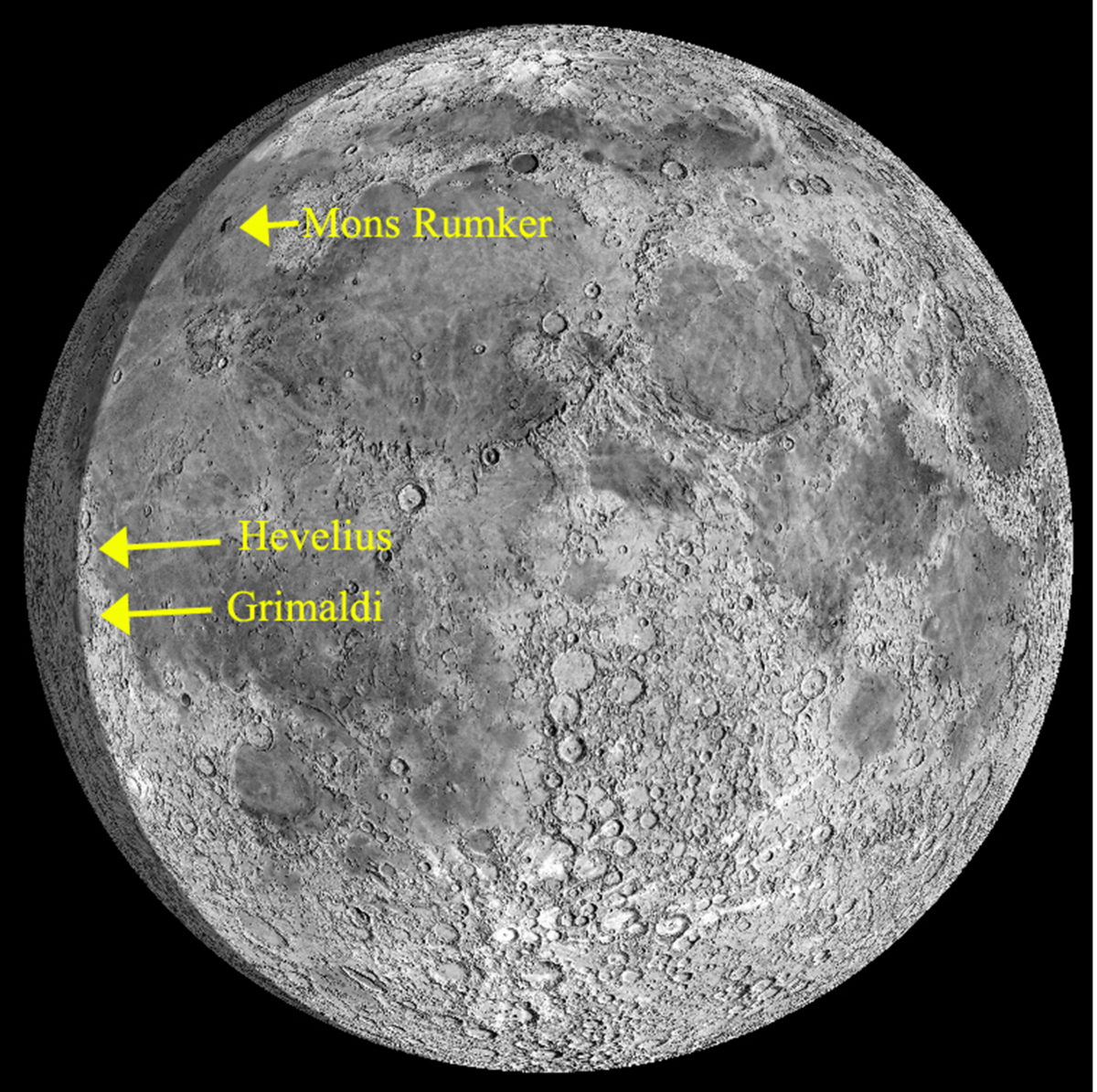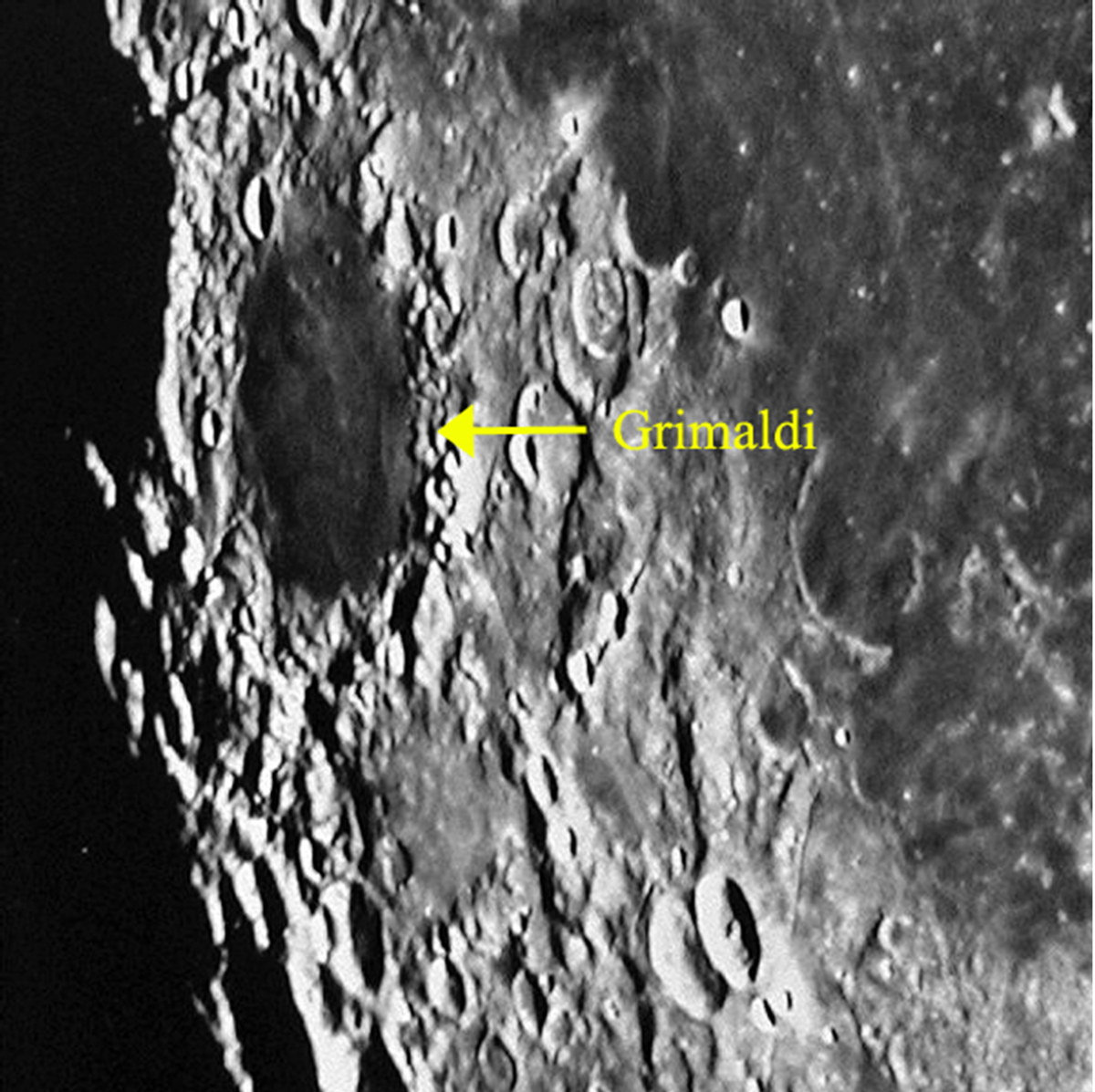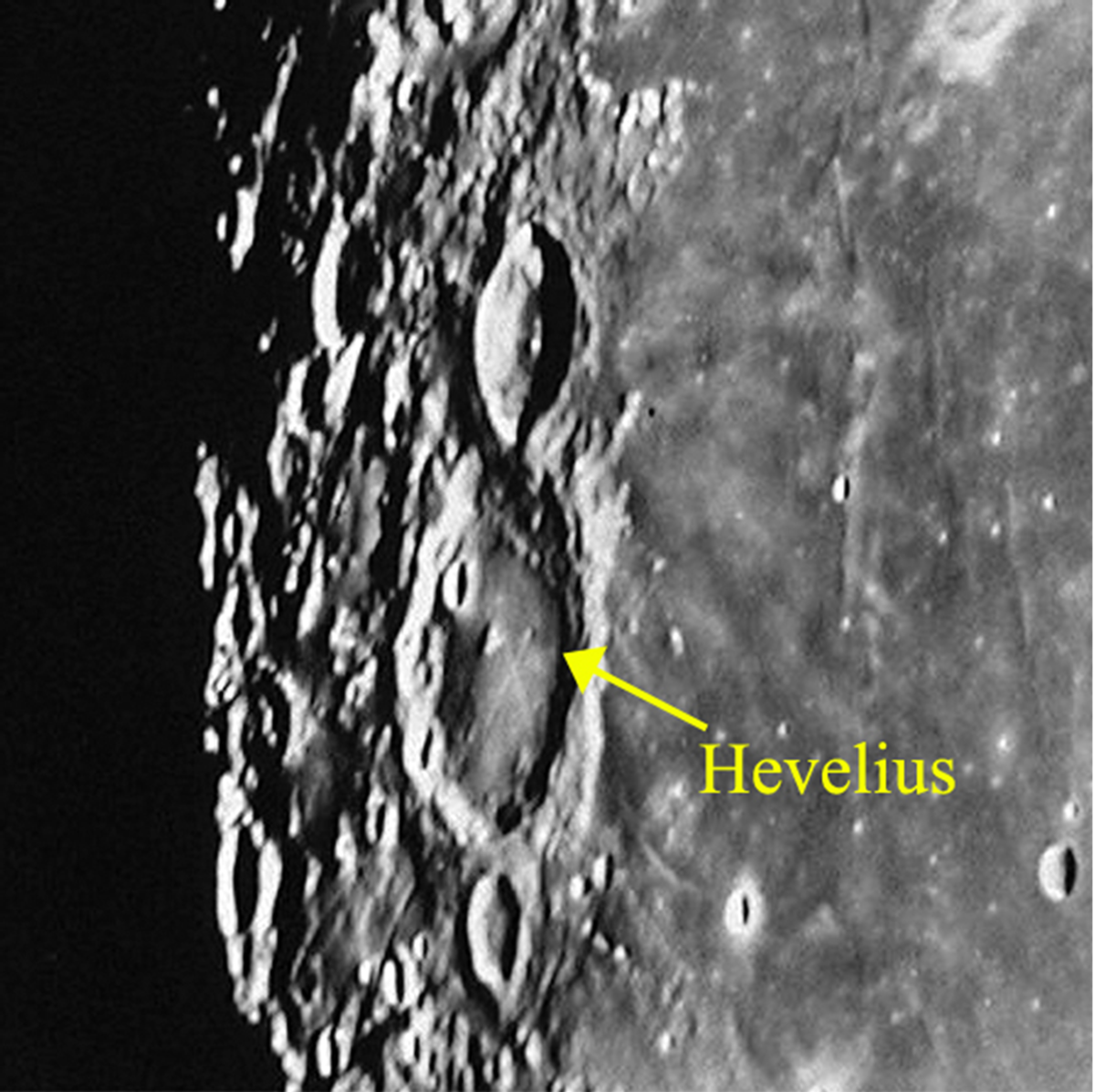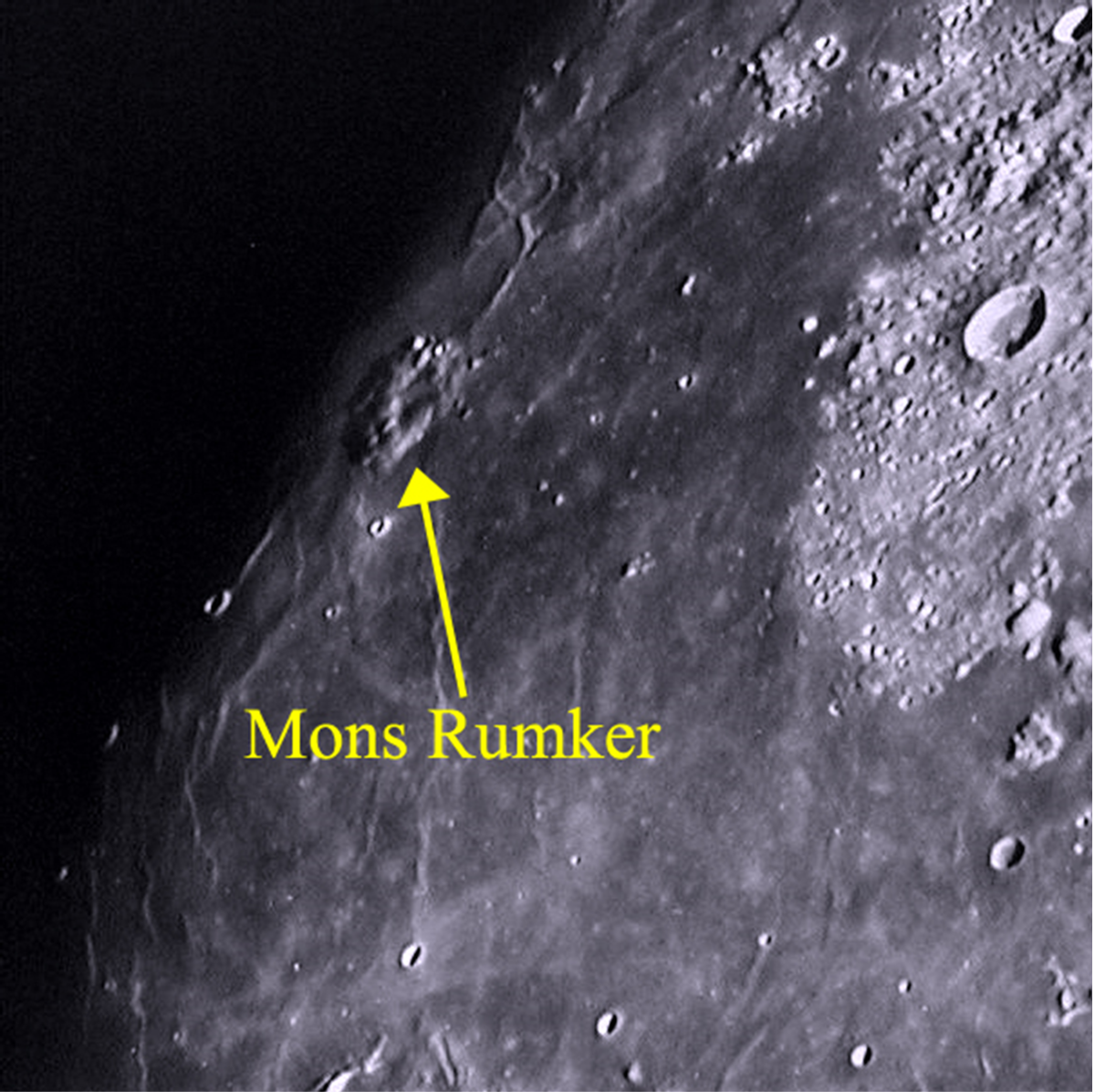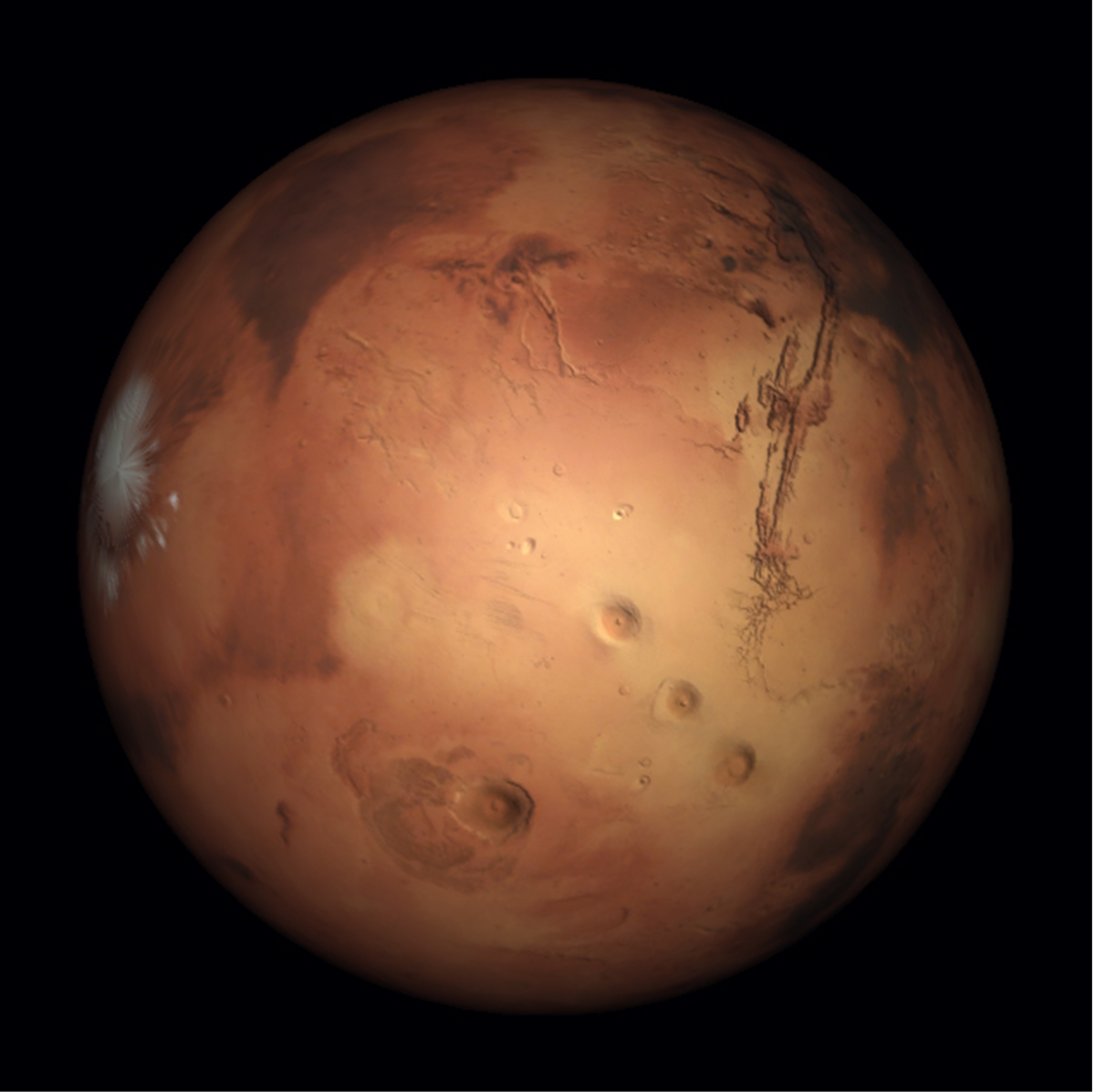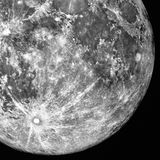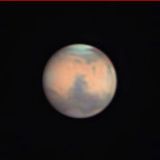
The Full Moon of April falls on the 15th of the month. As we look forward to the total lunar eclipse on the night of the 14th-15th, let's observe the Moon before it's completely full. After all, the best time to observe the Moon is when there is still a line of shadow falling across it. On Saturday, April 12, the Moon is waxing gibbous at 12.68 days old, and 95% illuminated.
The Moon is ever changing, and even the special features we tend to visit over and over take on new and interesting appearances, as the shadow line, named the Terminator, moves minute by minute. Here is our Moon as of Saturday, with a few interesting targets identified for you to observe:
Below are detailed images and description of those areas. These are fun to view in a telescope under good conditions. I've heard people say the view feels like flying over the lunar surface!
Grimaldi is visible in 10 power binoculars. It is a very dark circular formation, appearing much like a sea, or Mare. You may see a number of small craters on its very flat and smooth floor, Grimaldi also has very high slopes, with pock-marked craters embedded in them. This is a great time to pick out details.
Hevelius is very close to Grimaldi, and forms a nice pair with Cavalerius just above it in this image. This crater too has steep slopes embedded with many small craters. The floor has a small central peak. See the cross-marks near the central peak? Those are part of Rimae Hevelius, rilles that criss-cross the floor. The main crater can give pleasing views in a 10 power binocular, but for details such as the rilles, you'll need something more like a 12" telescope.
Mons Rumker can be viewed in an instrument as small as a 50mm refractor, and is a pleasant surprise among lunar targets. It is described as a tortured area of lunar domes forming a circle, and showing steep slopes. I think it is an anomaly among lunar features. In the large Sinus Roris (Bay of Dew) surrounding it, you'll find other small isolated lunar domes as well ejecta rays from ancient impacts splayed across the surface.>
There is so much to explore on the Moon, and following the Terminator makes it all the more enjoyable, since it is the area of highest contrast between shadow and light. The features really pop out in 3D.
On tonight's map at the start of this article, I point out Porrima - Gamma Virginis. This is a wonderfully tight double star. During my years observing, it has gone from a 2.5 arc-second separation (1995) to 0.4 arc-second in 2008. In 2010 it was back to 0.9 arc-seconds and now is back to over 2 arc-seconds, and significantly easier. You can "split" this double star now in a 50mm telescope. It is a true binary star, where both members are bound together by gravity, shining individually at magnitudes 3.6 and 3.5. They shine at a combined magnitude 2.6, 39 light years distant, and have an orbital period (around their common center of gravity) of 169 years.
Gamma Virginis is a star you'll enjoy watching year after year - as you can watch the changes in separation.
Finally, here is an image from Starry Night Pro, of what Mars will look like tonight:
I considered describing its features (I love the Tharsis Montes craters lower right!) - but instead will refer you to the Mars Observing Guide already written on the Orion website, delineating the various features you should try to see.
Tonight is a great time to observe Mars, which is at its brightest. The good news is, even tonight's big Moon won't interfere with your views. Get your scope, family and friends out, because tonight is an observing delight!
Please leave a review on this article, and let me know what you observed in your telescope, and what features you were able to see.
Clear skies,
Mark Wagner
Images courtesy the Lunar and Planetary Institute From The Consolidated Lunar Atlas. Mars image from Starry Night Pro.
Mark Wagner is a life-long astronomy enthusiast and deep sky observer. He has spent the past twenty years popularizing amateur astronomy in the San Francisco bay area. Please post your comments, questions, sketches or images you've taken of the targets mentioned above.




